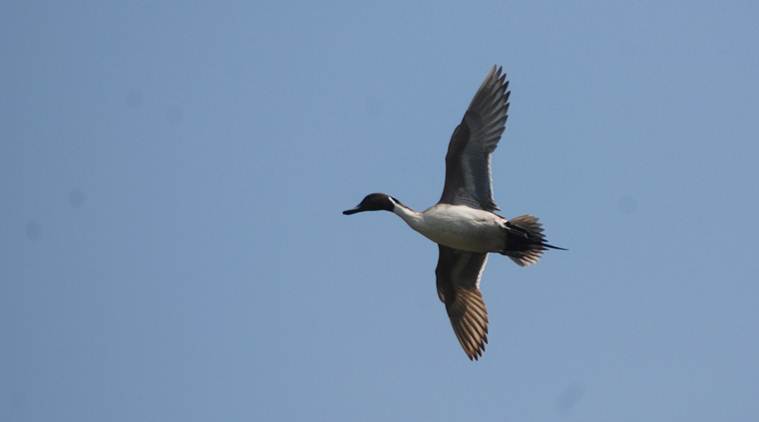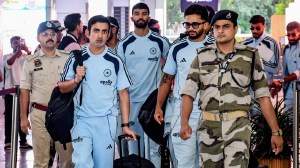Down in Jungleland: Shooting Birds
The digital art of capturing birds.
 By far, birds in flight make for the most challenging of subjects.
By far, birds in flight make for the most challenging of subjects.
BIRDS ARE restless subjects, not prone to taking direction — and you need to be quick off the trigger to capture the right moment. Some, of course, are gloriously cooperative, but many, especially forest-dwelling birds, are shy and nervous and lurk deep in the foliage, where dappled sunlight or sheer lack of light can cause problems. As for your weapon: a DSLR (digital single-lens reflex) is probably the best equipped with a telephoto or zoom that goes to maybe 500mm. A fixed-lens semi-professional camera with a good zoom range (some go all the way to 80x or more — but with this you’ll need to put the camera on the Rock of Gibraltar to keep it steady enough!) can do — though many of these have a distinct shutter lag — an infinitesimal pause between the time you press the shutter button and the picture is actually taken — and enough for the bird to turn its back on you or fly away!
By far, birds in flight make for the most challenging of subjects. Most digital cameras have autofocus and tracking abilities, which make matters simpler, as well as the ability to shoot at maybe five frames per second. But it’s still not as easy as it might seem and there are matters you have to decide on: Should the camera be on a tripod or not? A tripod is essential for keeping the camera — and that bazooka telephoto lens steady — but you can have a problem tracking a bird when it zips directly overhead. A monopod could be used, but when you track the bird, it will almost certainly tangle with the undergrowth as you lift it up and drive you nuts. Shooting hand-held is the simplest way out: you can follow the bird as though through the sights of a shotgun.
It has often been mentioned that bird photography will erode your powers of observation and water down the whole experience of birding. There is some truth to this: too often after a trip if you are asked what a particular bird looked like, you (who had been busy photographing it) will look blank and mutter, “Don’t remember exactly, but I took its picture!”
With flight photography, I think this works in reverse. You can appreciate a way a bird flies — the type of wing-beats it uses — shallow and rapid, deep and slow, flapping followed by gliding — but you don’t see the beautiful symmetry of the wings as they beat up and down. A photograph freezes a moment in the wing-beat and now you can study and appreciate the position of the wings and deployment of the feathers in that instant of the beat. In one case, I was startled to notice that the bird had folded its wings almost entirely by the sides of its body and looked more like a torpedo than a bird. A pigeon in take-off mode literally “claps” its wings. You can see the way flight pinions twist about their axis as they generate thrust and when a bird comes in to land, you can see the “alula” (aka the bastard wing) come up on the leading edge of the wing, just like the flaps of an aircraft before landing.
The best way to get started with flight photography is to pick on relatively common birds. Go up to the terrace and focus on black kites, for example. Watch the way their flight pinions angle and adjust, the way they use their tails to steer and bank. You can even try pigeons and doves — though you’ll be surprised how swift they are. Other easy (and lovely) targets are the gulls which fly down to rivers, lakes and other waterbodies in winter, and, of course, migratory waterfowl. Ducks fly swiftly as jets and it’s quite a challenge tracking just one bird in the melee. (Now you’ll appreciate the problems raptors face while trying to pick out a target from a swiftly moving flock.) The slower-flying big birds, like herons and storks are, of course, easier to home in onto — and the hovering pied kingfisher will always provide a breathless challenge.
I had tried my luck with flight photography (and wasted huge quantities of film) in the days before digital and autofocus. On one occasion, I stationed myself at the end of a water channel in the Delhi zoo. Swallows zipped up and down the channel and turned around at the ends, so that’s where I stood waiting. I pre-focused and tracked the birds, clicking the moment I thought they came into sharp focus, and ate up a lot of film. But I was thrilled to get two-three sharp shots. It was a completely hit-and-miss operation. On another occasion, I stood at the edge of the Yamuna, where swallows were on their patrolling beat. There was a stiff breeze blowing and when they flew upwind, they slowed down so much so that it seemed like they were hovering. So, I had plenty of time to focus and shoot. Hah, I thought — the birds looked as though they were flying at about 80 kmph and no one need know that they were virtually stationary — so I could casually shrug and say, “Yes, it was tough, you need lightning reflexes!” Gleefully I shot a couple of rolls of transparency film.
Alas, both the rolls were ruined in processing — and there was not even a single salvageable frame. Ah, I guess, cheaters never prosper after all.
Ranjit Lal is an author, environmentalist and bird watcher.




- 01
- 02
- 03
- 04
- 05



























